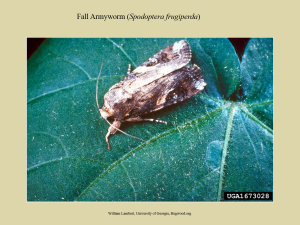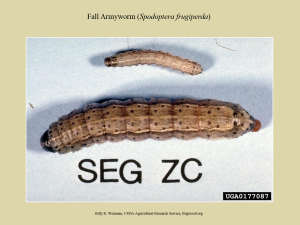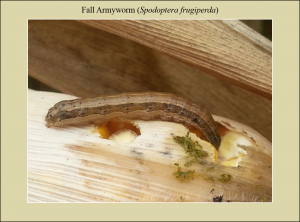Fall Armyworm
go.ncsu.edu/readext?898250
en Español / em Português
El inglés es el idioma de control de esta página. En la medida en que haya algún conflicto entre la traducción al inglés y la traducción, el inglés prevalece.
Al hacer clic en el enlace de traducción se activa un servicio de traducción gratuito para convertir la página al español. Al igual que con cualquier traducción por Internet, la conversión no es sensible al contexto y puede que no traduzca el texto en su significado original. NC State Extension no garantiza la exactitud del texto traducido. Por favor, tenga en cuenta que algunas aplicaciones y/o servicios pueden no funcionar como se espera cuando se traducen.
Português
Inglês é o idioma de controle desta página. Na medida que haja algum conflito entre o texto original em Inglês e a tradução, o Inglês prevalece.
Ao clicar no link de tradução, um serviço gratuito de tradução será ativado para converter a página para o Português. Como em qualquer tradução pela internet, a conversão não é sensivel ao contexto e pode não ocorrer a tradução para o significado orginal. O serviço de Extensão da Carolina do Norte (NC State Extension) não garante a exatidão do texto traduzido. Por favor, observe que algumas funções ou serviços podem não funcionar como esperado após a tradução.
English
English is the controlling language of this page. To the extent there is any conflict between the English text and the translation, English controls.
Clicking on the translation link activates a free translation service to convert the page to Spanish. As with any Internet translation, the conversion is not context-sensitive and may not translate the text to its original meaning. NC State Extension does not guarantee the accuracy of the translated text. Please note that some applications and/or services may not function as expected when translated.
Collapse ▲
Fall armyworm (Spodoptera frugiperda) does not overwinter in North Carolina. Moths migrate into the state each year and low caterpillar numbers can often be found by late May in the northern Coastal Plain. Only late planted corn, after early to mid May, may become seriously infested. Thus, the major tactic for preventing loss to this insect is to avoid both late planting and very late maturing hybrids (e.g. 126 RDM). The recent trend to plant tropical corn in mid-season for silage invites serious infestation by fall armyworm (and other late season caterpillar pests). See scouting guidelines for mid-season insects.
If severe infestation occurs (50%+ of plants with caterpillars) grain yields may be reduced by the leaf feeding; 100% infestation will result in about 18% grain yield reduction in a 140 bu/A corn crop. If caterpillars are present as tasseling begins, caterpillars move from the whorls and eat into the side or tip of the ear. Several caterpillars may infest ears. This insect may seriously affect popcorn, white corn, and seed corn if the crop matures late.
Some Bt proteins effectively control this insect. In non-Bt corn, control of larger size fall armyworms with insecticides is very difficult. All late planted corn may be scouted on a weekly interval for small fall armyworms until plants are near the tassel stage. Small caterpillars are more easily controlled and it is important to treat an economic infestation before it spreads and becomes entrenched in the whorl. See scouting guidelines for whorl feeding insects.




